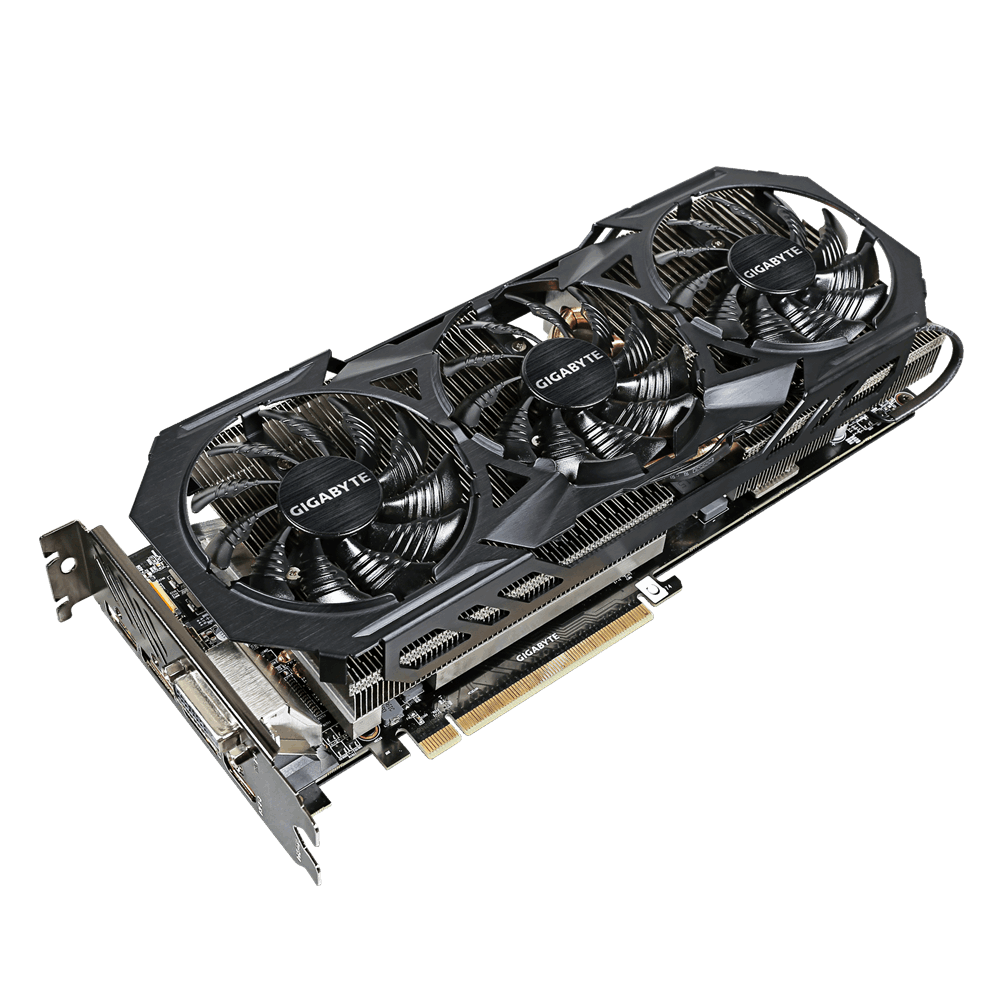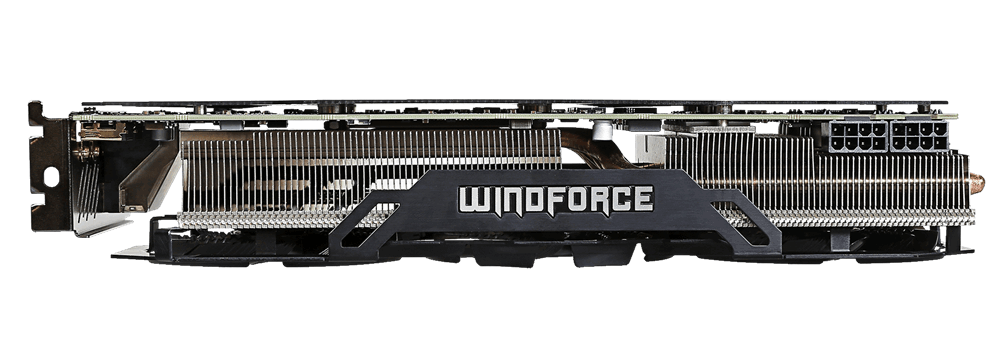Gigabyte's WindForce Has The Fury In It: R9 Fury WindForce OC Revealed
AMD Launched the R9 Fury in July, but only select OEM partners were granted access to build cards for the launch. In September, when AMD released the R9 Nano, the company said that it would be opening up channels for other board partners to build Fiji-based graphics cards. Gigabyte appears to be the first partner to take AMD up on the offer.
The R9 Fury is the most affordable of the three Fiji-based cards. The GPU features 8.9 billion transistors, 3,584 shaders and 224 texture units, which is slightly fewer shader cores and texture units than both the R9 Fury X and R9 Nano, but the cut-down Fury has one notable advantage: Add-in board partners are free to customize the air-cooled R9 Fury.
Gigabyte took advantage of this fact and made its own PCB design for the GV-R9FURYWF3OC-4GD, which most people will call Gigabyte's Radeon R9 Fury WindForce OC Edition. Not much is known yet about the card. We can see from the images posted on Gigabyte's website that the PCB is much longer than the design that Sapphire used in the only air-cooled Fury we've tested so far. Other than the extra length, we don't yet know what Gigabyte has done to make it unique.
AMD specified that the Fury be clocked at 1,000 MHz. Gigabyte's card comes clocked slightly higher at 1,010 MHz, but presumably the custom board would have some features to help with overclocking. The board is equipped with Gigabyte's WindForce 3 cooler, so its cooling system is certainly ready to be pushed further, and the company has bundled OC Guru II software, so it intends for customers to overclock the card.
| Chipset | Radeon R9 FURY |
|---|---|
| Core Clock | 1010 MHz |
| Memory Clock | 1000 MHz |
| Process Technology | 28 nm |
| Memory Size | 4 GB |
| Memory Bus | 4096 bit |
| Card Bus | PCI-E 3.0 |
| Memory Type | HBM |
| DirectX | 12 |
| OpenGL | 4.4 |
| PCB Form | ATX |
| Digital max resolution | 4096 x 2160 |
| Analog max resolution | 2048 x 1536 |
| Multi-view | 4 |
| I/O | HDMI*1/Display Port*3/Dual-Link DVI-I |
| Power requirement | 600W (with two 8-pin external power connector) |
We've reached out Gigabyte for more details on its custom PCB design and any other information we can get.
Update, 10/19/2015, 7:56 a.m. PDT: The original version of this article erroneously stated that Gigabyte's card is the first custom PCB Fury. All Fury PCBs are custom designed because AMD did not create a reference board for the entry level Fiji chip. The memory type in the table also incorrectly stated GDDR5. All Fiji GPUs use HBM memory.
Follow Kevin Carbotte @pumcypuhoy. Follow us @tomshardware, on Facebook and on Google+.
Get Tom's Hardware's best news and in-depth reviews, straight to your inbox.
Kevin Carbotte is a contributing writer for Tom's Hardware who primarily covers VR and AR hardware. He has been writing for us for more than four years.
-
jimmysmitty To me the biggest downside to the Fury X is the inability for OEMs to customize it. I think they could easily come up with a superior air solution for a Fury X.Reply
Maybe we will see higher clocked Furys with custom PCBs and coolers but so far even the Sapphire Tri-X Vapor-X design and Asus Strix DCUIII have not pushed it much higher. -
littleleo AMD needs to let board partners make their own version of the Fury X I think they would do a better job then AMD's version. And drive more sales of the Fury X GPUs.Reply -
Nuckles_56 Well, I see a problem with the table, as it says that the card has GDDR5 memory when it actually has HBMReply -
TallestJon96 The regular Fury is 1 of the few AMD cards that actually makes sense to me. It beats a 980, but is $100 cheaper than the 980 ti. Good for 4K gaming on the cheap, or strong 1440p performance.Reply -
knowom ReplyThe regular Fury is 1 of the few AMD cards that actually makes sense to me. It beats a 980, but is $100 cheaper than the 980 ti. Good for 4K gaming on the cheap, or strong 1440p performance.
Good for 4K except that it doesn't support 4K HDMI TV's and monitors which are the most common 4K display's available at present time.
There is also the fact that AMD's minimum frame rates generally struggle a lot more than NVIDIA which become even more important as you increase resolution.
I won't make sense for a whole lot longer NVIDIA is prepping Micron based GDDR5X for the GTX980 which will double it's bandwidth and might also double it's VRAM capacity. -
eodeo AMD needs to fix video playback power usage. It's 3 years since nvidia did it, that makes it about time AMD starts thinking about it too. They fixed multi monitor power draw with fury, now just video playback and they'll have a usable everyday GPU.Reply -
turkey3_scratch Fiji is not just an every day GPU, it's a gaming card, and whatever small power it uses, be it probably 20W, will not matter. Plus CPU does most of video displaying.Reply

